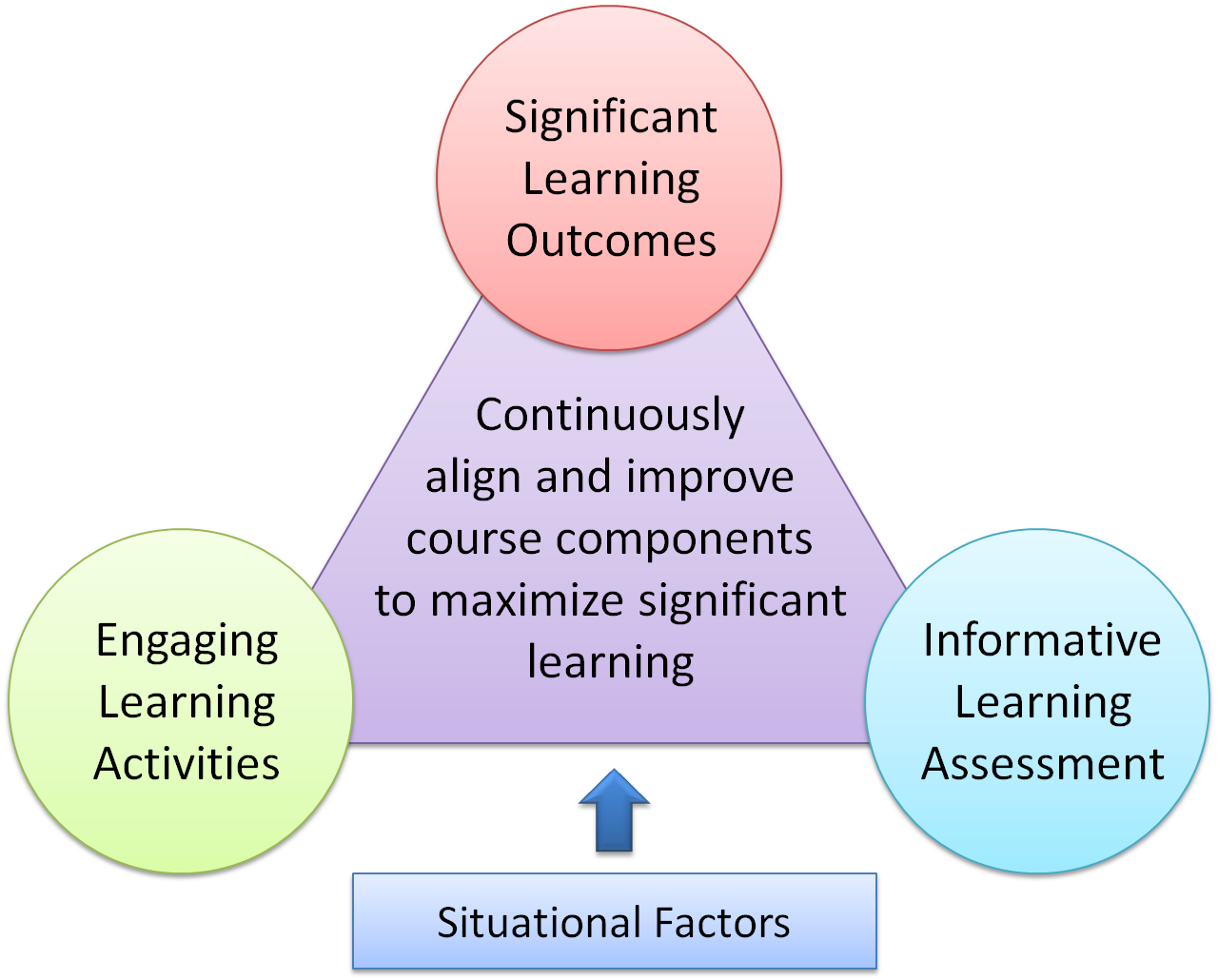Course Design Overview
When designing a course, an instructor needs to ask three major questions:
- Where are we going? (What are the goals of the instruction?)
- How will we know when we have arrived? (What should our tests look like? How will we evaluate and revise the instructional materials?)
- How will we get there? (What is the instructional strategy and the instructional medium?)
The above three questions can be demonstrated by Figure 1 below.

Figure I. Course design model (Adapted from Fink, L.D. (2003). Creating Significant Learning Experiences, Jossey-Bass.)
Significant learning outcomes
Corresponding to question 1 (Where are we going?), the first step in course design is to develop significant learning outcomes for our course, as represented by the red circle in Figure I. What is that we want our students to achieve at the end of the course? The product from the first step is a list of learning goals and specific learning objectives.
Informative learning assessment
Once we establish the significant learning outcomes of the course, the next step is to determine informative learning assessment (represented by the blue circle in Figure I), corresponding to the second question above. How do we assess students to ensure that they have achieved the significant learning outcomes of the course? The product from this second step is a set of assessment items that measures students’ learning outcomes.
Engaging learning activities
Up to this point, we already know what students need to achieve and how to measure the outcomes. The last step is: how do we get students from their current level to the significant outcomes we want them to achieve? It is through the instructional strategies we employ, which are operationalized as engaging learning activities (represented by the green circle in Figure I) we implemented in every class throughout the semester.
Continuous alignment & improvement
While each of the three components (significant learning outcomes, informative learning assessment, and engaging learning activities) is very important, more important is that we align the three (as shown by the purple triangle in Figure I).
Take a look at the goals and objectives of our course – if we want our students to be able to analyze health services issues, recognize and treatment clinical problems, demonstrate critical thinking, or develop professionalism, we need to ask ourselves: Are we really measuring students against these objectives? Do the learning activities really take students toward that direction?
For more information about course design, please refer to the following resources:
- Fink, D. Planning your course: A decision guide
- Fink, D. A self-directed guide to designing courses for significant learning http://www.deefinkandassociates.com/GuidetoCourseDesignAug05.pdf
- Smith, P. & Ragan, T. (1999). Instructional design (2nd ed.). New York: John Wiley & Sons, Inc.
This page was last modified on June 10, 2015